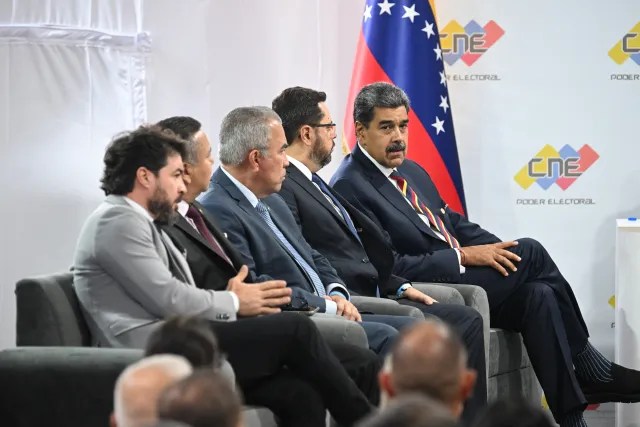
During the administration of Nicolás Maduro, at least 17 political parties in Venezuela have been “intervened”.
lapatilla.com correspondent
The vast majority of the decisions to usurp political parties’ leadership have been issued by the Chavista Supreme Court of Justice (TSJ), an institution that has been used as an instrument to subject the directives of opposition political organizations.
The intervention orders establish that the board of directors or the majority of the members of the political parties be suspended, expelled or replaced by members designated by the TSJ.
The next step has been the handing over the reins of the organization to a board with close relations with the Maduro regime, always appealing to the excuse of “promoting internal democracy.”
With the interventions ordered by the TSJ, has been summarily imposed the replacement of the directives of historically important political parties such as Acción Democrática (AD), Primero Justicia (PJ) and Voluntad Popular (VP).
However, some political organizations related to Chavismo and that have been critical of the regime have also been taken over, such as, for example, the Communist Party of Venezuela (PCV).
So far the parties that are judicially prosecuted are ‘Por la Democracia Social’ (Vamos), in 2012. In the case of ‘Bandera Roja{ (Maoist), that traditionally had supported Chavismo, has been intervened twice (2012 and 2020).
Traditional organizations such as the People’s Electoral Movement (MEP), initially allied with Chavismo, were also prosecuted in 2015.
The Copei party has also been the target of intervention on two occasions, namely: 2015 and 2019.
The Ecological Movement of Venezuela suffered judicialization in 2018, and was followed by Acción Democrática (AD), Primero Justicia (PJ) and Voluntad Popular (VP), Movimiento Republicano, Tupamaro, Patri Para Todos, Compromiso País (Compai), Nueva Visión para mi País (Nuvipa), all in the year 2020.
The Communist Party of Venezuela was prosecuted in 2023, and Movimiento de Integridad Nacional-Unidad (MIN-Unidad) party was intervened in 2015.
Henri Falcón, who has always been an ally of Chavismo, denounced the intervention of his Avanzada Progresista party in 2022.
“Opposition” made to fit
For the presidential elections scheduled for this July 28th, the parties intervened by the TSJ all nominated their candidates, who appear to be “opposition” parties, but who in reality play into the hands of Chavismo. This trick is intended to show, on the one hand, supposedly “competitive” elections, and on the other, it seeks to confuse the electorate and international observers.
How were the cards of the intervened parties distributed between the so-called “scorpion” candidates and Nicolás Maduro on the voting ballot?
Candidate Luis Eduardo Martínez: Was nominated and presented as candidate for the AD, Copei, Bandera Roja and Republican Movement cards.
Candidate José Brito: Was posted by the fake Primero Justicia (PJ) and Primero Venezuela, he was the designated during the first intervention of (PJ).
Candidate Antonio Ecarri: In addition to running with his Lápiz party, he uses the cards of Min-Unidad, Avanzada Progresista and the Ecological Movement.
Candidate Daniel Ceballos: he does the same with the Voluntad Popular card, apart from the fact that he ran with his Arepa party.
Candidate Nicolás Maduro: Posted with the cards of Podemos, PPT, Tupamaro, PCV and MEP, apart from eight other parties. He thus becomes the candidate with the most cards (13 in total) on the ballot.